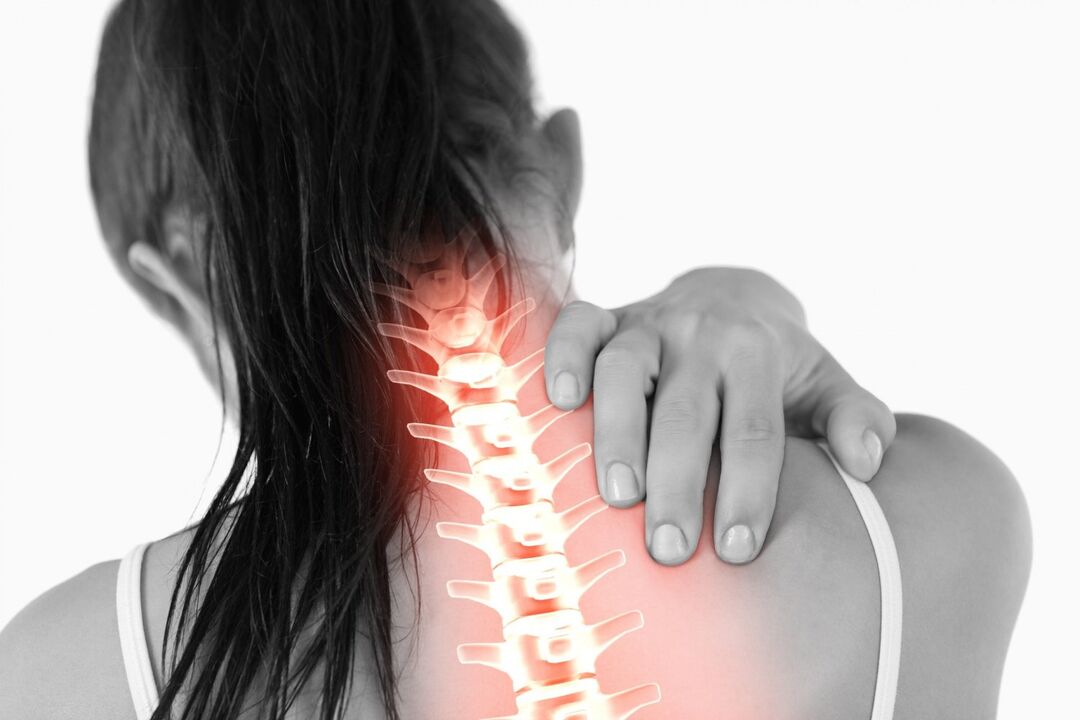
The most common cause of upper and middle back pain is cervicosternal osteochondrosis. While this slowly progressive pathology is not fatal, it can significantly worsen a person's quality of life and, in some cases, lead to disability. Only by maximizing the elimination of the factors that cause uneven pressure on the spinal motion segments can the irreversible biological aging process be slowed down, thereby relieving the disease.
Causes of Spinal Degenerative Diseases
Osteochondrosis of the cervicothoracic region is a multifactorial pathology of the intervertebral discs connecting 7 cervical and 12 thoracic vertebrae. The most common causes of degenerative changes are:
- Gravity (displacement of center of gravity and redistribution of axial load)
- Working long hours in forced positions
- vibration
- Lack of motivation
- autoimmune disease
- Spinal overload associated with musculoskeletal disorders (deformities, flat feet)
- Infection and inflammatory processes in nearby structures
- metabolic disorder
- Genetic abnormalities in connective tissue development
- trauma
- Excessive static or dynamic load
- hormone imbalance
Exacerbating osteochondrosis in both men and women can be stress, chronic nervousness, malnutrition, and hypothermia.
Symptoms of cervical and thoracic osteochondrosis
The degenerative process of the affected disc is accompanied by a regional pain syndrome and referred pain. Due to the violation of the blood supply to the brain, patients complain of headache, dizziness, "fly" in front of the eyes, and pain in the shoulder or the entire upper limb, intercostal and interscapular area. Discomfort, tingling in the neck, chest, abdomen, periodic painful throbbing in the ears or temples, pain when coughing and sneezing.
After being in a forced position for a long time, a squeezing sensation occurs. Cervicosternal osteochondrosis is often accompanied by typical cardiac symptoms, complicating the diagnosis. Among other signs, numbness in certain areas of the skin, disruption of the digestive tract, increased pain with deep breathing, and shortness of breath in the supine position should be highlighted.
Stages of Osteochondrosis
The pathological process has 4 stages of development:
I - swelling and movement of the medullary material within the disc, irritation of peripheral nerve endings. Cervical and thoracolumbar pain occurs in the context of physical activity
II - Dehiscence of the annulus fibrosus, disruption of the fixation between the vertebral bodies, instability of the vertebral segment. With persistent muscle tension, dysfunction, and limited mobility
III - Disc membrane rupture and nucleus pulposus herniation (hernia). Root compression syndrome manifests as reflex prolapse, weakness, atrophy, and sensitivity impairment in the innervated area. II - Dehiscence of the annulus fibrosus, impaired fixation between the vertebral bodies, instability of the vertebral segment. With persistent muscle tension, dysfunction, and limited mobility
IV - Degenerative disease of all components of the intervertebral symphysis. Due to mineralization and compaction of the intervertebral disc, arthropathy of the facet joints develops and the mobility of the affected area is significantly limited.
diagnosis method
The diagnosis of vertebral pathology is made in a complex including:
- Collection of vital and pathological medical records
- static physical examination
- Diagnostic tests (study of active and passive movement disorders)
- determine neurological status
- Spine Plain Dual Projection X-ray
- CT scan
- NMR
In specialized clinics, MRI is combined with manual testing in diagnosing various dorsal lesions. The combined use of these methods provides complete information on the regional localization of disc-derived disease, cellular structure and metabolic activity, and the status of all soft tissue components.
which doctor to contact
Neurologists manage patients with vertebral disease. Also, you may need help from a chiropractor, spine surgeon.
How to Treat Cervical Sternal Osteochondrosis
Treatment for cervical and thoracic osteochondrosis includes:
- Medications for pain, swelling, and inflammation
- manual therapy
- massage and self-massage;
- Physiotherapy procedures (UVI, electrophoresis, laser, magnetic therapy, DDT)
- Reflexology
- physical therapy exercises
- corset, straps
- isometric after relaxation
If osteochondrosis is complicated by intervertebral hernia, surgery is recommended for the patient.
Effect
Indifference to one's own health and neglect of medical advice can lead to a positive progression of the pathological process and the development of various reflex and compression syndromes:
- Chronic cranial and chest pain (headache from the neck-occipital region, pain in the thoracic region)
- Limit head tilt in the opposite direction to the lesion
- upper extremity vegetative disorder
- Sensory problems in the hands and fingers
- Visceral dysfunction
- Partial fixation of the spine
- Disability
Prevention of cervical sternal osteochondrosis
To minimize the impact of negative factors, regular exercises aimed at strengthening the muscular frame are recommended. During long-term monotonous work, it is important to monitor posture, change positions frequently, avoid large movements, and protect yourself from cold temperatures and drafts.
























